How Service Providers Can Use G2 Buyer Intent to Win the Right Clients
Lead generation and building pipeline are pretty important for most businesses. But for...
August 18, 2023
 by Stephen Hoops
by Stephen Hoops
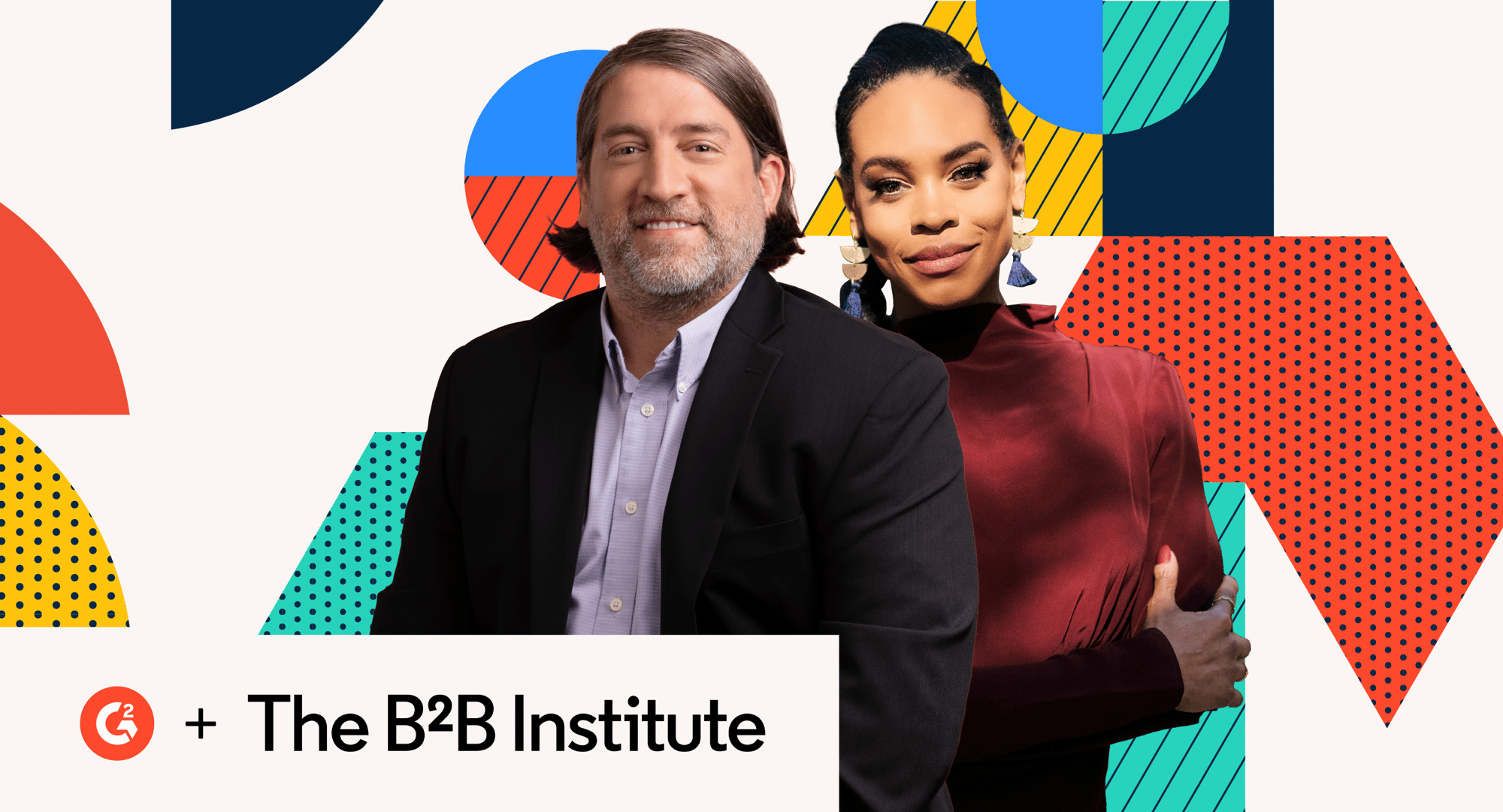
Change is nothing new to the seasoned marketer.
What separates good from great marketing pros is how they embrace the reality of an evolving world and search for opportunities to thrive.
An always-changing B2B tech landscape means that buyers have shifting expectations and behaviors. At the most basic level, marketers must frequently evaluate their buyers' and customers' thoughts, desires, and actions to drive more revenue.
Ty Heath is the Director of Market Engagement at The B2B Institute at LinkedIn and a seasoned marketing leader with nearly two decades of experience. An expert in digital marketing, content strategy, and marketing education, Ty recently joined G2’s Chief Revenue Officer Mike Weir for a live discussion on LinkedIn. Mike and Ty dug into three software buying trends marketers need to know about and shared their insights and perspectives.
Certain insights can give you a leg up and strengthen your strategic initiatives to fuel success in engaging the right buyers. If you couldn’t catch this LinkedIn Live session, we got you covered as we’ll highlight the key takeaways and learnings from Mike and Ty’s discussion.
Did you know that only 5% of your ideal buyers are currently in-market at any given time?
Consider that most sales and marketing teams are hyper-focused on that small percentage of buyers because they are the most likely to convert. This makes a ton of sense, but Ty argues that brand-building should still be a part of the overall marketing mix.
Ty Heath
Director, Marketing Engagement, The B2B Institute at LinkedIn
The argument here is that brand-building efforts require a long-term commitment. While you aren’t directly appealing to and prioritizing that other 95% right now, Ty advocates that you need to lay the groundwork for when they are in-market.
Consider the turbulence and uncertainty happening in the current software market. Marketers everywhere in the space likely have to deal with smaller budgets and a reduction in resources. In a time when everyone is pulling back spending and prioritizing revenue growth in the short-term, brand-building is often one of the first things companies deemphasize.
As the old cliche goes — when nothing goes right, go left. If every company steps back from brand-building, some organizations will jump on the opportunity to gain traction and strengthen their brand in the long run.
As any marketer will tell you, it’s tough building a solid brand that consistently captures the attention of their ideal market. Because it is a long-term strategy, Ty mentions three specific benefits of a continued commitment to brand-building.
It’s difficult to overstate the complexity of software buying. From sales cycles getting longer to the growing prevalence of buying committees to the sheer volume of choices in any given software category, buyers have a lot to overcome.
Similarly, software vendors must face the reality of their buyers’ shrinking budgets, yet the expectation of driving revenue growth with fewer resources remains. Driving predictable pipeline is crucial, and preventing customer churn is more important than ever.
Buying software looks nothing like it did just over a decade ago. As buyer experiences and expectations shift, so do their buying behaviors.
The latest edition of the annual G2 Software Buyer Behavior Report had some excellent insights with greater implications for the broader B2B software market. During the LinkedIn Live session with G2’s Mike Weir and B2B Institute’s Ty Heath, the two discuss the top three trends to emerge from this research that software marketers need to know.
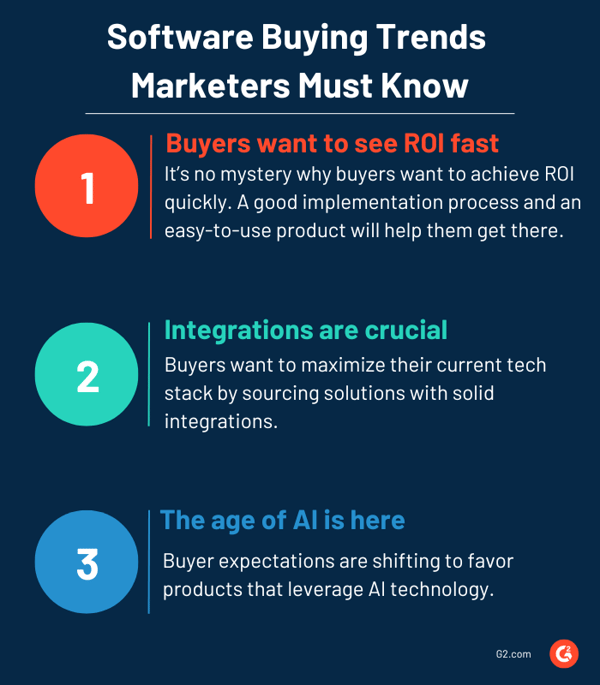
Everyone wants to feel validated in their decision-making. It’s no surprise why buyers want to verify ROI with the technology they utilize. But the time in which they need to prove that ROI is only speeding up.
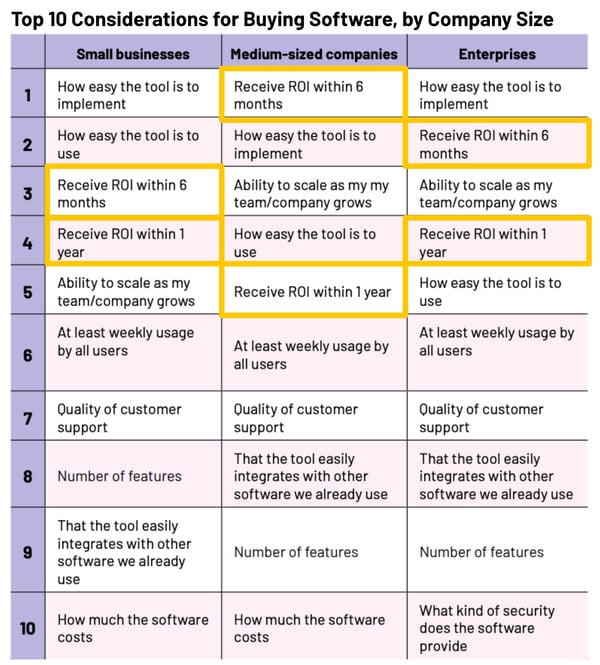
Of respondents anticipating software spending to increase in 2024, achieving ROI within six months is the most important consideration during the purchase process. Moreover, six months was the average contract length for vendors across North America, EMEA, and APAC regions, further demonstrating that vendors are on the hook to show value – fast.
Mike Weir
Chief Revenue Officer, G2
Relating back to Ty’s perspectives, it’s essential to think about that as you build your brand, advocate your points of view, and establish your leadership in certain parts of the market, it allows you to build that credibility and trust. Part of communicating value and ROI involves demonstrating you are a company that's worth betting on.
The modern tech stack can look wildly different from one company to the next. But as buyers come to rely on some technologies, this can impact how they view purchasing new software.
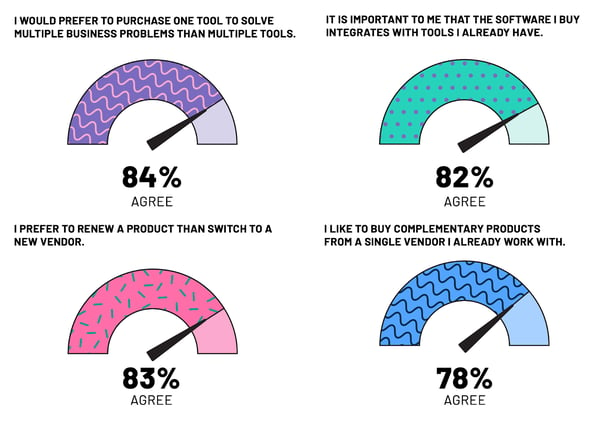
82% of respondents mention it is important to them that the software they buy integrates with their existing solutions. Buyers rank ease of integration higher than the cost of the software, the kind of security it provides, or its total cost of ownership (TCO). Also, 84% of buyers prefer to utilize one solution over many, and 78% prefer to buy complementary products from a single vendor they already work with.
It’s interesting to note that being solution-oriented in your approach to integrations is a common theme that often pops up on the GTM Innovators podcast. Several experts in go-to-market strategy on the show stress how integrations that maximize the usefulness of data between different technologies can be critical to achieving better alignment.
Since many revenue organizations know the challenges of sales and marketing alignment all too well, this is an important concept to emphasize when touting integrations with partners.
If you’ve read any news in the last year, you know that AI is a big deal now. While the hype has peaked for now, interest remains as high as ever for companies and buyers excited about the potential this new age of innovation has to offer.
There’s no telling what the future has in store, but AI technology will play a big part. Some argue that generative AI has the potential to boost global GDP by 7% by 2030, with numerous professionals across industries hailing this as a new frontier for businesses.
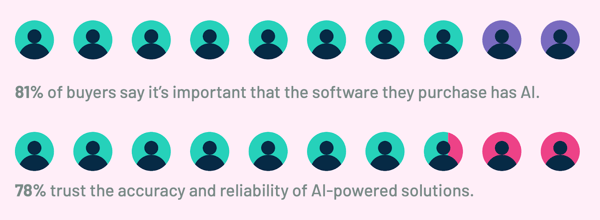
As more businesses explore how to incorporate AI technology into their products, buyers indicate a similar interest in leveraging it. 81% of respondents stated that AI is important in the software they buy.
As exciting as new technology can be, there’s value in practicing cautious optimism. AI technology is making advances at such a rapid pace that it presents unique challenges and risks.
Ty Heath
Director, Marketing Engagement, The B2B Institute at LinkedIn
The truth about technology like generative AI and large language models (LLMs) is that they need to be trained on data and content. Because of this, there’s an inherent risk of bias if the proper precautions aren’t taken to ensure the quality and neutrality of these inputs.
One pitfall of chasing down trends and ideas captivating the market is not assessing the gravity of the situation. In early 2023, it seemed every big SaaS brand was touting its latest product iteration that incorporated AI.
When you make big promises, don’t be surprised when buyers feel disappointed when the follow-through doesn’t happen. It’s perfectly normal to pivot or react to what the market craves. The question becomes more about whether you can deliver now instead of selling buyers on that future vision.
Mike Weir
Chief Revenue Officer, G2
The data says buyers want AI in the solutions they purchase, meaning it can be a determining factor. While it may seem like an innovative, flashy thing to include in some marketing content and sales conversations, you better realize this is a very deep pool you're wading into. You need to be ready to have that in-depth conversation with your prospects and existing customers.
The B2B software landscape is always changing and expanding. Marketers must stay ahead of the curve to adapt and find growth opportunities.
Businesses will likely continue down the path of achieving greater alignment across sales and marketing. Fostering synergy and having a shared vision can go a long way, but understanding buyer behavior can be crucial to inform your collective strategies.
During their discussion, Ty and Mike covered a lot of ground and shared their unique insights beyond what we could pack into this recap. Here are the highlights you’ll want to take with you if you didn't catch their talk on LinkedIn Live.
Get even more useful advice and perspectives from leading B2B marketing experts. Watch the full LinkedIn Live session featuring Ty Heath of the B2B Institute and Mike Weir of G2.
 Understand the actions behind buying decisions.
Understand the actions behind buying decisions.
Be sure to check out the full LinkedIn Live session featuring The B2B Institute's Ty Heath and G2's Mike Weir.
Stephen Hoops is a former Sr. Content Marketing Specialist at G2. He focused on creating content that helps tech industry sales professionals and B2B SaaS marketers find success with G2 products such as Buyer Intent, Review Generation, and more. After receiving his B.A. in Journalism from West Virginia University in 2013, he has helped countless B2B brands reach new highs through content creation and SEO. When not nerding out about the artistry behind well-written copy, Stephen can be found info-dumping about homemade cocktails, Italian cuisine, and why vinyl is the superior physical medium for music.
 Understand the actions behind buying decisions.
Understand the actions behind buying decisions.
Be sure to check out the full LinkedIn Live session featuring The B2B Institute's Ty Heath and G2's Mike Weir.
Lead generation and building pipeline are pretty important for most businesses. But for...
Technology is constantly reshaping how we do business, and the dynamics of B2B interactions...
The world of B2B software discovery is rapidly evolving, with Artificial Intelligence and...